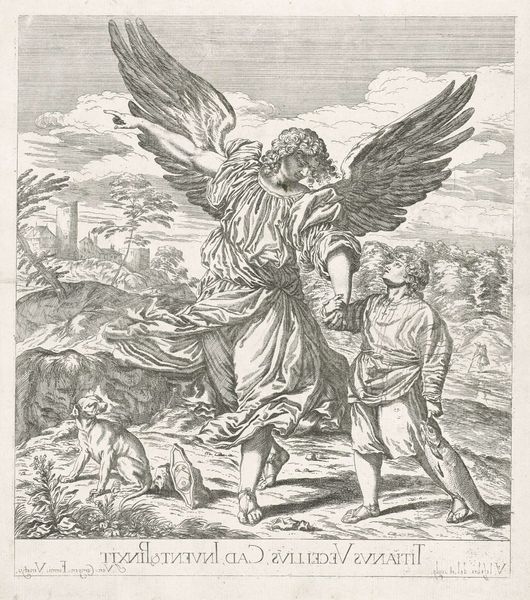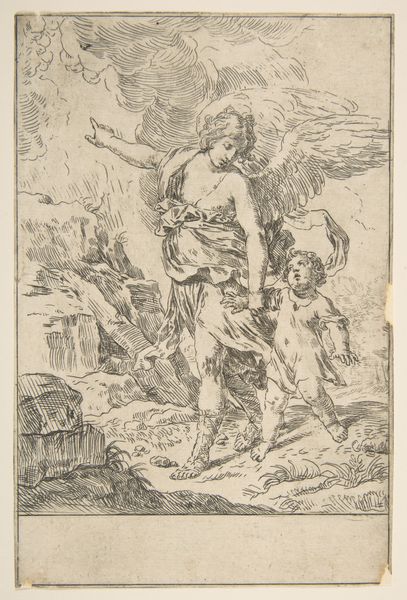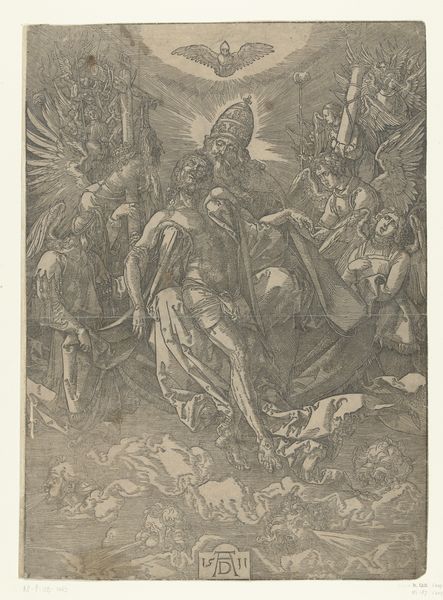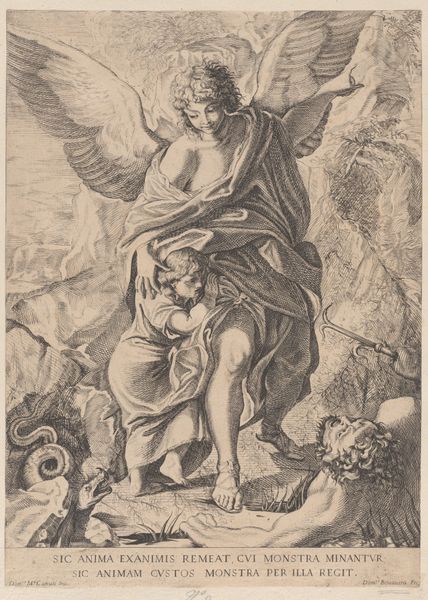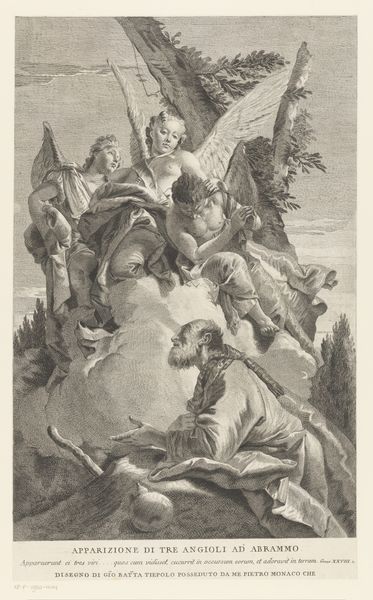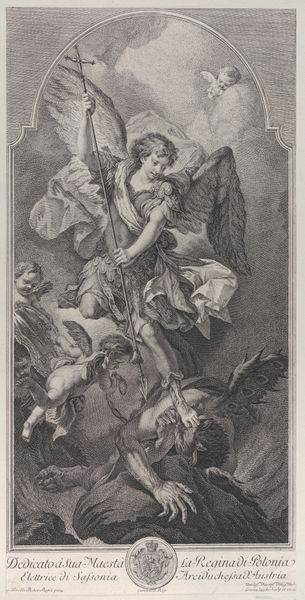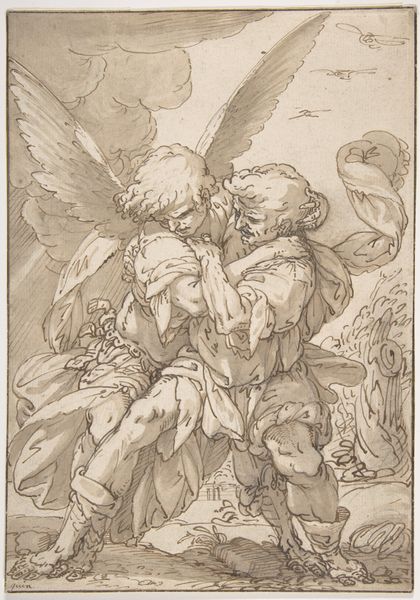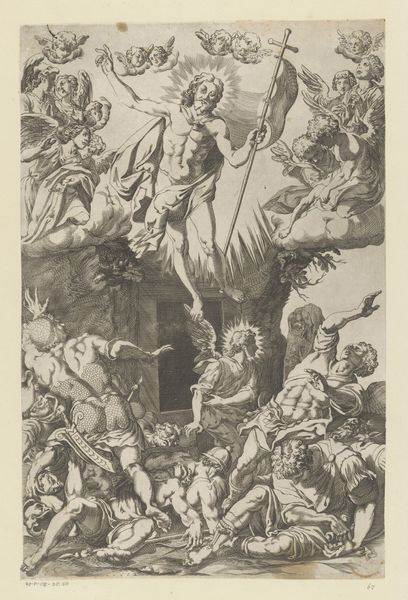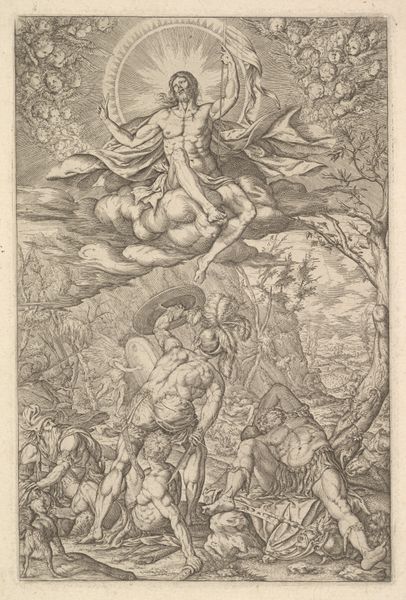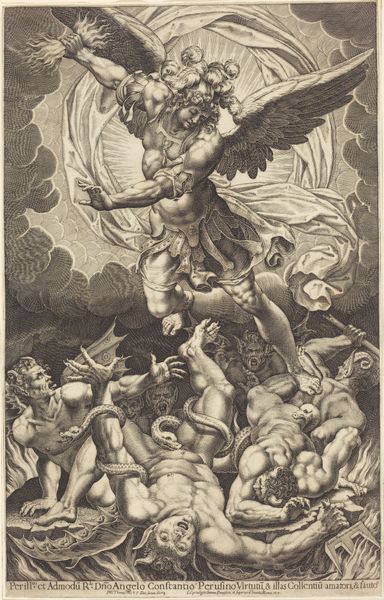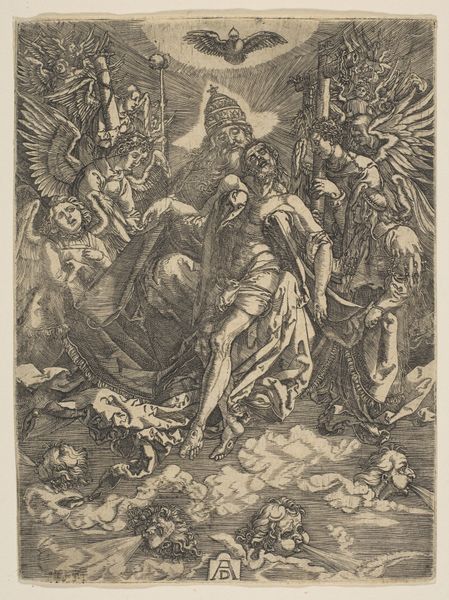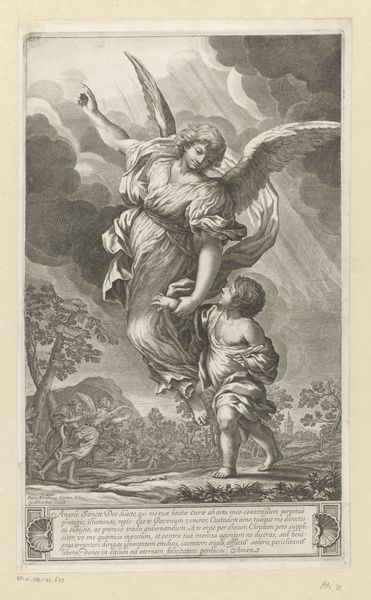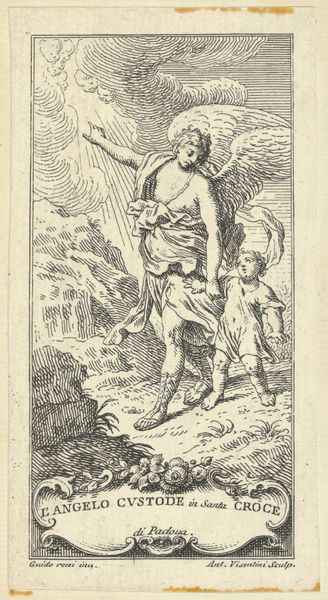
print, engraving
#
ink drawing
#
baroque
# print
#
figuration
#
history-painting
#
engraving
Dimensions: sheet (trimmed to plate mark): 24.8 x 19.2 cm (9 3/4 x 7 9/16 in.)
Copyright: National Gallery of Art: CC0 1.0
Curator: What strikes me immediately is the dynamic composition—the strong diagonal formed by the angel's wing contrasting sharply with the crouched figure below. There's a real tension there, almost theatrical. Editor: That's certainly a valid impression. We are looking at an engraving entitled *Guardian Angel*, dating back to 1622. Curator: And one that visualizes protection; note how the angel almost violently grabs the central figure to rescue him from some evil that’s literally creeping below. Who are the figures at play here and in what setting do they act? Editor: Indeed, let’s contextualize the piece further. Angels gained new social and artistic meaning with post-Tridentine art. This angel comes to intercede in what is most likely a struggle of morality. Consider, at this moment in time, the representation of spiritual intervention – in life, and by extension, art – was promoted heavily by the Church. In the process, gender norms come to the forefront. This central angel—usually presented with masculine characteristics in art—offers motherly protection over a vulnerable male. Curator: Absolutely. And while gender fluidity might be imposed onto it retroactively, such an imposition also helps to deconstruct these archetypes to build a renewed and richer meaning for viewers of today. What did a symbol of divinity mean back then and what can it mean now for the modern world? What narratives of safety, vulnerability, and, ultimately, salvation can it represent, beyond the obviously theological? Editor: Good point. This connects with the increasing agency allowed in artistic patronage at the time. Artists started catering their craft not only to institutional bodies like the Church, but to the individual consumer’s social and political spheres. Curator: Looking at it now, with fresh eyes, the angel almost seems androgynous. It challenges this whole binary. What’s the message beyond surface level understanding here and to whom does it speak? How is this visual language altered? Editor: It truly highlights the ever-evolving nature of interpretation and reinterpretation in art history. Thank you.
Comments
No comments
Be the first to comment and join the conversation on the ultimate creative platform.
